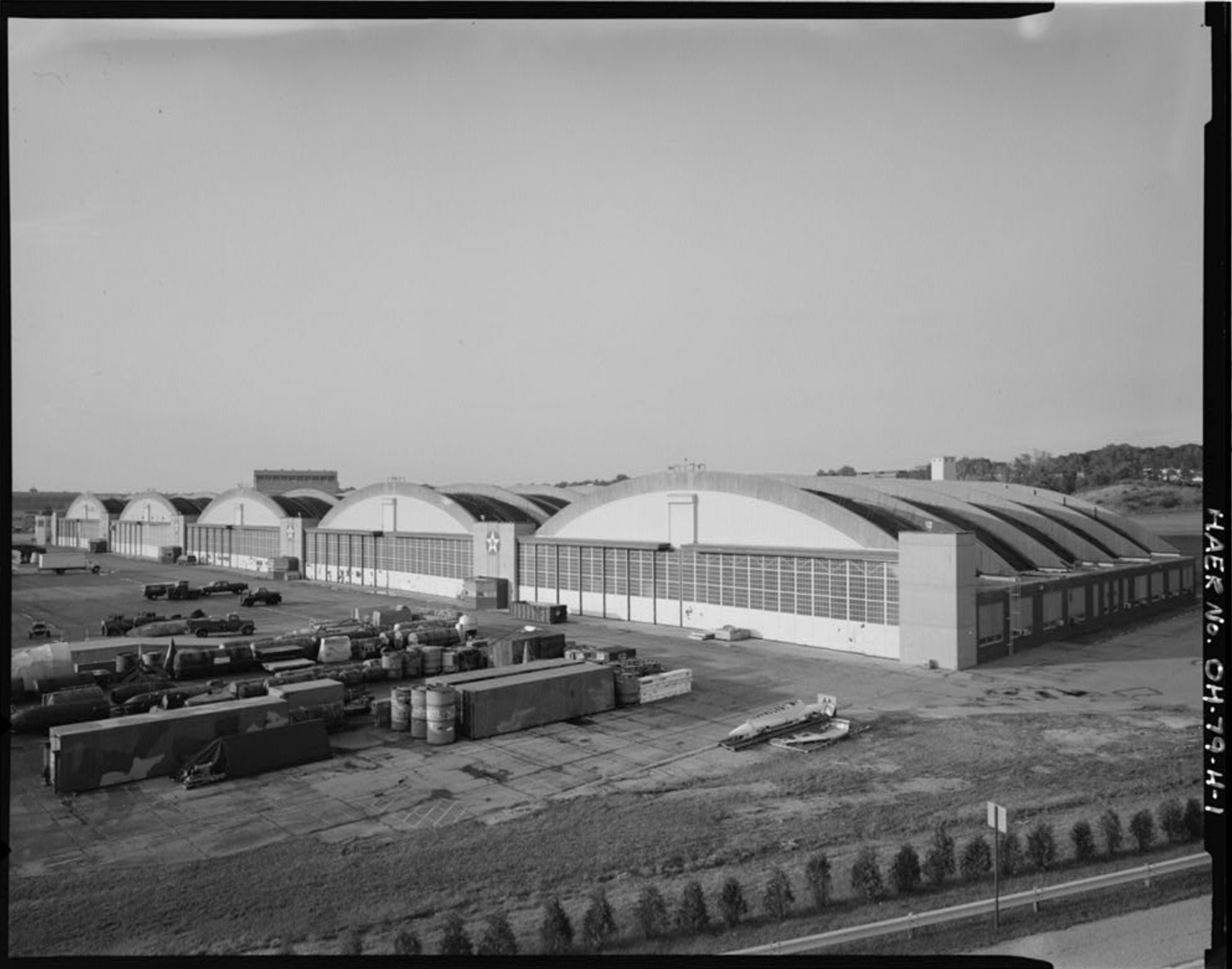Wright-Patterson AFB Hangar 18

Introduction
Hangar 18 at Wright-Patterson Air Force Base is infamous in both historical and conspiracy theory circles. While officially known as Area B, Building 4—part of a complex constructed in 1944 for aircraft modification and testing—the structure’s association with alleged extraterrestrial materials has embedded it in American pop culture and UFO lore.
Wartime Origins and Role
The five-hangar complex served as a Modification Hangar and Flight Research Lab during World War II, helping prepare and alter aircraft for evolving battlefield requirements. Its strategic position on the south end of the flightline at Wright Field placed it at the heart of America’s air power innovation.
UFO Conspiracies and Hangar 18 Myth
The myth of Hangar 18 as a storage site for alien artifacts gained prominence in 1974, when science-fiction author Robert Spencer Carr claimed the U.S. military was hiding alien corpses recovered from a 1948 crash in Aztec, New Mexico. He specifically cited Wright-Patterson AFB as the location, naming “Hangar 18” as the facility housing these extraterrestrial remains.
Carr’s sensational claims led to intense public interest, a feature film in 1980, and repeated denials from the Air Force. Yet public fascination continued, driven by Carr's stories of alien autopsies and claims of eyewitnesses—including engineers and military personnel.
Cultural Influence and Reinforcement
The 1980 movie Hangar 18, while fictional, reinforced Carr's narrative. Other references appeared in books like The Fortec Conspiracy, which fictionalized rumors about the Air Force’s Foreign Technology Division analyzing UFO materials.
Music and television helped cement the myth. Megadeth’s 1990 track “Hangar 18” portrayed a secret facility hiding alien technology. In Star Trek: Deep Space Nine, the episode “Little Green Men” featured characters detained in Hangar 18.
- The Simpsons mocked the lore in a comedic sight gag involving an alien in a military base.
Official Denials and the Truth
The U.S. Air Force denies the existence of any such operation. Official statements maintain that there is no "Hangar 18" storing alien remains, and many of Carr's witnesses were unverifiable. Carr’s own son later discredited him, describing his father as a compulsive storyteller with a history of fabricating encounters—from conversations with dolphins to friendships with swamp alligators.
Despite this, Wright-Patterson’s real Foreign Technology Division (now NASIC) did exist, tasked with analyzing recovered foreign aircraft and technologies—fueling speculation among UFO enthusiasts.
The “Goldwater Incident”
Former Senator Barry Goldwater reportedly requested access to a restricted area at Wright-Patterson, widely believed to be tied to the Hangar 18 rumors. He was denied access, lending an air of credibility to the secrecy. Goldwater later confirmed he made the request but claimed ignorance of any alien materials.
Present Day – Software, Radar, and Reality
The site known as Hangar 18 is now used for more mundane purposes, such as housing the Hangar 18 Software Factory—providing digital capabilities for defense and aerospace applications. Additionally, “The Barn” (Hangar F/20006) on base is known for radar technology research.
Conclusion
The story of Hangar 18 is a fascinating blend of military history, science fiction, misinformation, and American imagination. Whether as a literal hangar or a metaphor for secrecy, it remains a powerful symbol of humanity’s curiosity about the unknown.
